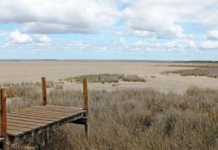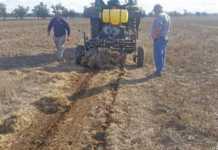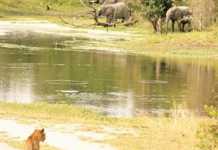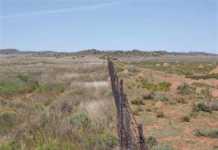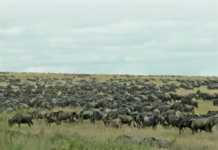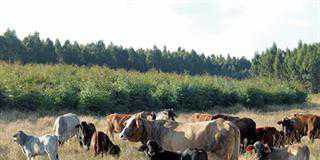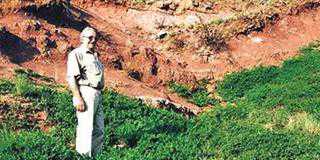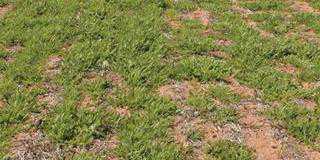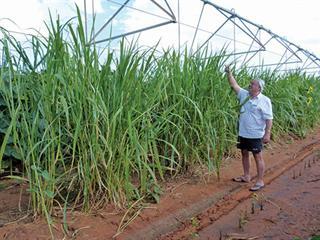
Bana grass is a hybrid derived from the annual babala (Pennisetum americanum) and the perennial Napier grass (P. purpureum). The name is said to be an acronym that orginates from the ‘ba’ in babala and the ‘na’ in Napier, although some say it’s a corruption of the word Ghana, a country where the grass is prevalent.
Bana is similar in appearance to sugarcane. It has pale green leaves up to 3cm wide, is densely tufted with shorter underground runners, and can grow as high as 4m. Trials conducted by the University of Pretoria found that it yielded exceptionally well and produced outstanding animal gains. My own experience confirms this. I have seen Bana grow on highly fertile land in the Barberton area in Mpumalanga, reaching a height of more than 3m and producing about 100t of silage just 90 days after planting!
Shortcomings and solutions
Two things count against Bana. Firstly, it cannot be planted from seed. Like sugarcane, it must be planted using short pieces of stalk, so planting large areas is a big job.But it can be done – consider the thousands of hectares of sugarcane planted in South Africa!
A second potential problem is Bana’s rapid growth. It quickly becomes too tall for grazing, as well as very stalky. Hard, short grazing is part of the solution, but continual short grazing seriously reduces forage yield. One way to solve this problem is to rotate hard grazing with Bana grown out to full height. The Bana can then be ensiled, or cut down with a robust mower and left as a mulch or turned into compost.
Speedy planting
Johan Retief, who farms near Petrusburg in the Free State, believes that Bana can play a crucial role on his farm. He has deep sandy loam soil, some of which has a high water table. He irrigates high-value crops intensively and lower-value crops strategically.
A fortuitous incident inspired Johan to introduce a new way of planting Bana. Cattle broke through the fence of his Bana nursery and trampled the long stalks. Johan noticed that, within a short time, these struck roots from their nodes. This led Johan to introduce a similar planting technique. He plants long stalks with pieces of root in a shallow hole and then bends the stalk down, keeping it flat on the ground by covering it at several points with a spadeful of soil. In less than a minute, a farm worker can plant up to 4m of Bana. The proviso is that the soil must be moist so that it is easy to dig.
Different uses
Currently, Johan is using Bana in two ways. He plants Bana in rows 30m apart in his irrigated lands as a windbreak, helping to prevent seedlings from being sand-blasted. No-till has further reduced wind damage to seedlings. Johan is also increasing his livestock component to help stabilise his income. Because some of his lands have a high water-table, he needs plants that can cope in this environment.
He is conducting a trial, planting Bana with an inter-row spacing of 3,7m apart, then using his wheat planter to plant bird’s-foot trefoil and crownvetch in between. It is my prediction that, with proper management and skill, Bana will again become fashionable – in this region at least.
John Fair heads up Fair’s Biofarm Assist, and can be contacted on 058 622 3585 or [email protected].

